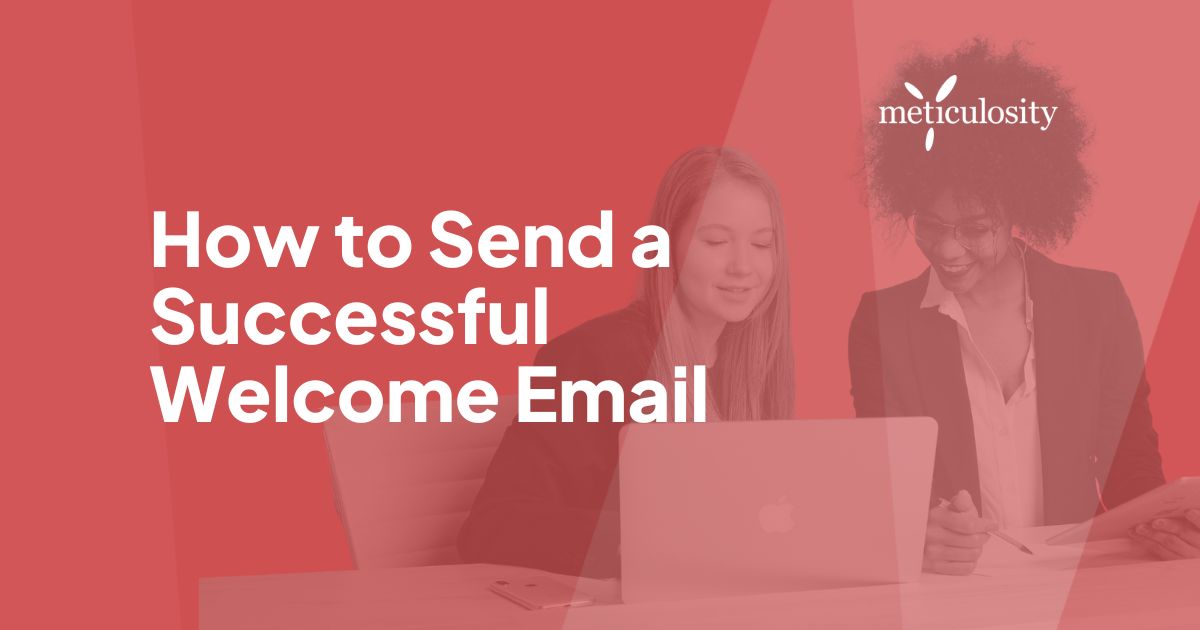So, sending that "first touch" welcome email is so important for a healthy sales strategy and can set a good tone for future dialogue.
What is a Welcome Email?
A welcome email is the first contact with a new customer or blog/newsletter subscriber. It's your chance to make a good first impression and form a strong relationship. The welcome email can also deliver helpful advice, next steps, videos, training, onboarding, demos, or just a thank you.
Why Welcome Emails Are So Important
In the marketing world, you need to have a good welcome email if you plan on forming a strong relationship with a new member of your tribe.
Welcome emails set the tone and create expectations for new subscribers and customers. They allow you to showcase your products and services to potential customers and reveal how often subscribers should expect messages.
Welcome emails are 86% more effective than newsletters, with a high open rate of 50%.
Making a good first impression is vital for email marketing. In fact, much of your success may rely on how your subscribers respond to these initial emails.
This guide will help you understand the key components of an effective welcome email. We’ll cover all the important steps for writing a great welcome email and provide tips for messages that work.
1. Planning & Executing Effective Welcome Emails
When a subscriber provides his or her email address to your business, there is an exchange of value. The exchange of value is a key component of almost every e-commerce company’s top-of-funnel strategy. It’s important to keep this in mind when writing a welcome email message.
There are several steps when creating valuable welcome emails. These include:
Implementing a Strategy
Your email marketing program isn’t complete without welcome messages. These emails have high inbox placement rates, making them vital to your digital marketing campaign.
Even if your business doesn’t currently send welcome emails, it’s never too late to start. One way to generate welcome message ideas is to examine other companies' actions. Note which aspects of the messages you like and adapt their successful practices to suit your organization’s needs.
Competitors and brands that cater to a similar audience as your company are a great place to start. This will help you establish benchmarks and further understand the opens, clicks, and conversions that make the strategy work. You can build upon these findings and custom-tailor your strategy to suit your needs. Besides checking out competitors’ emails, viewing sample welcome emails is another great way to draw inspiration.
Offer something of value every time you contact your email subscribers.

Keeping Your Promise
The initial email must include the coupon, ebook, free trial, or other item offered in exchange for sign-up. Not only does this add value to your welcome message, but it also creates trust among your subscribers.
Establishing a Timeline & Message Frequency
According to a recent marketing study, businesses that send over one welcome message experienced a 13 percent increase in sales. Many online retailers continue to send welcome messages even two weeks after sign-up. Some businesses send welcome emails up to two months after the sign-up date.
Of course, timing is everything with any type of messaging, including email. Here’s an example breakdown of how frequency slows down throughout a two-month welcome period:
- Email #1: Immediately
- Email #2: Two days after.
- Email #3: Eight days after.
- Email #4: Fifteen days after.
- Email #5: Thirty days after.
- Email #6: Forty-five days after.
- Email #7: Sixty days after.
If your company uses a promotional welcome message series, you can add segmentation criteria that stop sending emails if the subscriber becomes a customer within 60 days.
2. Make Smart Word Choices
When planning the content of your emails, word choice is key. Here are some things to keep in mind when crafting your message:
Keep it Personal
A personal subject line is an important component of a successful welcome message. Welcome messages’ read rates often predict how interested subscribers will be with subsequent messaging and can even indicate how much they’ll purchase.
Personalizing an email only takes a few small lines of code, but it has a very large payoff. Subscribers are more likely to interact with your business when the email is directed specifically at them. While adding the customer’s name is a great start, you can further increase engagement by adding more details.
Set Clear Expectations
Besides personalizing your welcome messages, we recommend setting clear expectations from the beginning of your campaign. Let subscribers know if they’ll receive messages weekly, daily, monthly, or any other interval.
Although you want to foster as much engagement as possible, it’s still important to make it simple for subscribers to opt out of your emails. This is preferable to a subscriber marking your email as spam because he or she was unable to unsubscribe.
3. Welcome Email Tips & Tricks
Need some ideas? Here are some tips for creating a welcome message that works, whether marketing to other businesses or consumers.
9 Ways to Get an Email Response from Busy People
B2B Welcome Emails
Straightforward, brightly worded intro messages are ideal for B2B welcome emails. Focus on bringing your potential client value instead of simply promoting your product. Other tips for a successful B2B welcome message for your email include:
- Asking the subscriber questions. If you’re offering a free download or other content, you can ask the subscriber if he or she has received them. Include a link to the content in the email's body.
- Providing free resources and tips for using your product. This is especially important if you’re in the software business.
- Establishing credibility by focusing on their product’s ease of use, convenience, and reliability.
- Creating goodwill by thanking the subscriber for signing up.
- Create a well-spaced schedule. If you annoy your customers, you risk ending up on their spam list.
B2C Welcome Emails
Companies marketing to consumers will take a different approach when creating welcome emails. Subscribers are looking for up-to-the-minute information on new products, online coupons, and flash sales.
Setting email expectations is an important part of your marketing campaign. Ecommerce businesses should consider the following tips:
- Start your message with a warm greeting, thanking the customer for signing up.
- Create a narrative. Illustrate why your products are unique, high-quality, or affordable.
- Highlight your best-selling products in the email to pique customers’ interest.
- Depending on your product and target market, mention aspects of your product that consumers value. This includes products that are fair-trade, organic, or locally grown.
- Include a coupon or special discount in the email. Special offers can entice the subscriber to revisit your website, leading to a sale.







